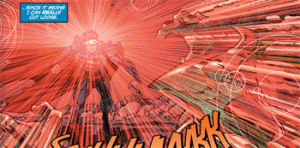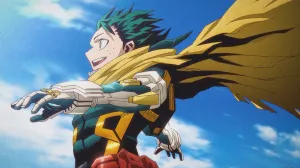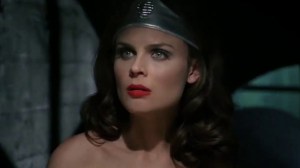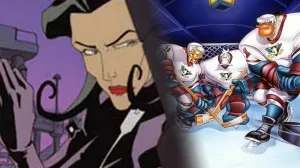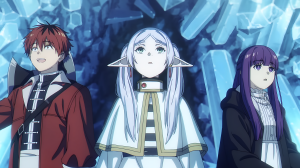With tomorrow’s release of Superman #7, which will feature the first work of new creative team Dan Jurgens, Keith Giffen and Jesus Merino, it seemed as good a time as any to take some stock in the writers who have affected the Man of Steel over his long lifespan.While we talked last week about the greatest artists ever to grace the characters’ comics, incoming writers Keith Giffen and Dan Jurgens are each legends in the comics field for both their art and their writing. Jurgens himself is already on this list, having crafted a long and distinguished run on Superman which he’ll be hard-pressed to top this time around. That said, his second volume of Booster Gold comics (co-created with Geoff Johns, Jeff Katz, Chuck Dixon, Norm Rapmund and others) is widely considered to be a substantial improvement on the issues he wrote as a young man, just after he created the character, so it’s entirely possible–especially with the help of a mad genius like co-writer Keith Giffen–that he could blow us all out of our chairs.As with the artist story, please note that these names are in a kind of rough chronological order, and someone being #1 or #10 doesn’t inherently mean that they’re the most or objectively least important creator on the list.
Videos by ComicBook.com
- Jerry Siegel The creator of the character, Siegel’s own backstory is fascinating. A conspiratorial and fictionalized version of it is available in the form of Brad Meltzer’s Book of Lies.) Long before Superman became a source of never-ending litigation between the Siegel family and DC Entertainment, Jerry and artist Joe Shuster created a character who took elements of science fiction, pulp detective and adventure stories and merged them with an inventive visual style that gave birth to mainstream superhero comics.
- Mort Weisinger One of the earliest editors to take on Superman, he may not have had credited writing work but certainly left an imprint on the character. With a heavy hand and an editorial philosophy that he meant to see implemented, Weisinger is widely credited with helping to drive innovation in the way Superman was perceived, particularly during a very fertile creative period when he oversaw the introduction of Superboy, Supergirl, the Legion of Super-Heroes, various different kinds of Kryptonite and more. Like Mike Carlin who would come after him, his name was synonymous with Superman for years and, for good or ill, most writers who worked under him felt as though he was a regular contributor to their creative efforts.
- Julie Schwartz One of the most universally-beloved editors in the history of comics, Julie Schwartz is widely credited with setting the stage for the John Byrne/Marv Wolfman revamp of the Superman titles that came following Wolfman’s Crisis on Infinite Earths crossover. Having successfully reinvented a number of characters during the Silver Age, Schwartz was set loose on the Superman titles in the early ’70s and began crafting a more realistic and relatable Man of Steel whose stories relied less on event stories and more on character-driven ones. At various times during his tenure, he played with the nature of Superman’s powers, often wishing to scale them back in the interest of making the character more relatable while at the same time overseeing the popular (but quickly undone) Kryptonite Nevermore! storyline.
- Elliot S! Maggin The creator of Superboy Prime and one of the names most associated with Superman during the 1970s and 1980s, Maggin’s contributions often tended to be somewhat more quaint and Silver Agey in their feel–something that didn’t always fit in with the Schwartz editorial philosophy but which struck a chord with fans who felt that the increasingly “human” Superman was leaving behind elements that they loved in years recently past. In the time since he stopped regularly working on mainstream comics, Maggin has been a regular political candidate as well as having penned three Superman-centric prose novels: Last Son of Krypton, Miracle Monday and Kingdom Come.
- Mario Puzo et. al. That’s right, folks–that Mario Puzo. The author of The Godfather left an indelible mark on the history of comics when he and his collaborators Robert Benton, David and Leslie Newman made moviegoers believe a man could fly. The original Superman movie remains one of the most beloved movies–not just superhero movies–in the history of cinema and everyone from average, man-on-the-street fans to DC Entertainment creative director Geoff Johns revere it not only for its quality but for the way it managed to embrace and present so much of Superman’s history, especially as compared to forerunners like The Adventures of Superman TV series. It defined who Superman is, what he stands for and even what he should look like to many fans for years.
- Alan Moore In spite of only writing a handful of Superman stories, his classic tales For the Man Who Has Everything and Whatever Happened to the Man of Tomorrow? are two of the most beloved and best-selling stories in the Superman catalog. They show a deep understanding of the character and a willingness to embrace the silliness of the Silver Age without being hobbled by it. Is it any wonder that DC chose him to close out the pre-John Byrne era?
- John Byrne Speak of the devil! John Byrne’s run on Superman as both a writer and an artist was fraught with controversy; many fans never completely got over the fairly radical facelift that characters like Superman and Wonder Woman got during and after Crisis on Infinite Earths, and so it was up to Byrne (who played a role in both relaunches) to win over enough new readers to offset the ones who weren’t coming back. Not only did he do it in spades, but he managed to completely reinvent the look and feel of the Superman titles in a way that has lasting impact to this day.
- Dan Jurgens Joining the Superman creative roster in 1991, Jurgens would remain an integral part of the team until 1999 when almost everyone working on the titles was replaced in a massive overhaul. In between, he managed to write best-selling and character-defining stories including Superman’s death, return, wedding and power change plots, as well as smaller, character-driven issues like the Metropolis Mailbag stories or issues revolving around the murder of Cat Grant’s son. He’s also been a great generator of original concepts, creating a number of enduring heroes and villains during his Superman run that included Agent Liberty, Doomsday and the Cyborg Superman.
- Mark Waid While he’s never written Superman titles, per se, Mark Waid has shown a terrific grasp on the character over the years, with stellar depictions of the Man of Steel in his JLA book as well as other DC Universe tales. Most notably, he wrote Kingdom Come–arguably one of the best Superman stories of the past 20 years and one that is frequently cited as an answer to the question “Why does Superman still matter?”.
- Grant Morrison In addition to All-Star Superman, a best-selling graphic novel with stellar reviews that spawned an animated feature film, Morrison’s Action Comics has been undisputably one of the great gems of the New 52. He’s able to juggle the high concept and mad science of the character along with the charming-but-not-hayseed personality that Clark needs to be believable very deftly. And it’s been years that he’s been doing this–as early as 1997 or 1998, I remember a review saying that Morrison was one of the only writers (in JLA, which he was writing at the time) who was using Superman’s then-new electrical powers properly.

